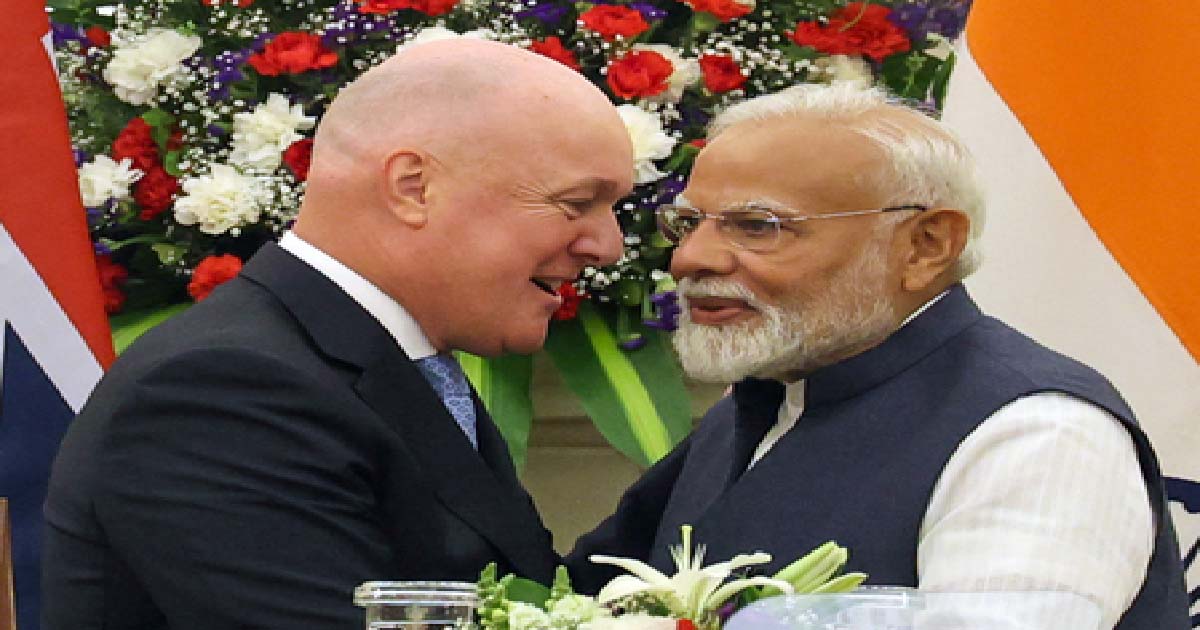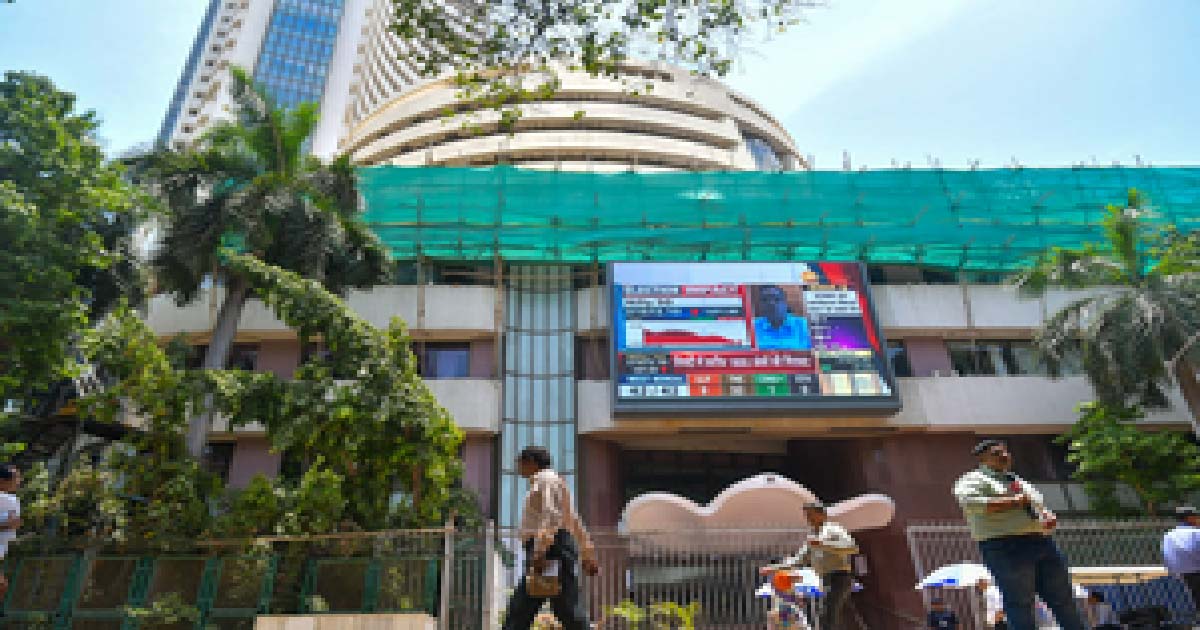Business
LIC assets at $463 bn exceeds the GDP of several economies
LIC assets at $463 billion exceeds the GDP of several economies, and it is ranked 5th globally in terms of life insurance GWP and 10th globally in terms of total assets.
Its assets are 1.1 times more than the entire Indian MF industry i.e. Rs 31.4 trillion (till March 31, 2021).
LIC’s assets are 16.3 times the AUM of the second largest private insurer in India, i.e. SBI Life. 4 per cent of total NSE market cap is held by LIC.
LIC is the largest asset manager in India with Rs 36.7 trillion AUM. LIC’s AUM on a standalone basis was equal to 18 per cent of India’s GDP for FY21.
It has been providing life insurance in India for more than 65 years and is the largest life insurer in India in terms of Gross Written Premium (GWP) with a market share of 64.1 per cent, New Business Premium (NBP) with a market share of 66.2 per cent, number of individual policies issued with a market share of 74.6 per cent and number of group policies issue with a market share of 81.1 per cent for fiscal 2021.
LIC is ranked 5th globally in terms of life insurance GWP and 10th globally in terms of total assets (comparing LIC’s assets as on March 31, 2021 with other life insurers assets as on December 31, 2020).
LIC is the largest asset manager in India as on March 31, 2021, with AUM (comprising policyholders’ investment, shareholders’ investment and assets held to cover linked liabilities) of approximately Rs 36.7 trillion on a standalone basis.
LIC’s investment in equities in India as on September 30, 2021 represented 7.62 per cent of the outstanding (non-promoter market cap in India).
As on September 30, 2021, LIC’s individual products portfolio in India comprised 32 individual products and seven individual riders / and it’s group product portfolio in India comprised 10 group products, which included one group micro insurance products.
In Fiscal 2019, Fiscal 2020, Fiscal 2021 and the six months ended September 30, 2021 — our individual agents were responsible for sourcing 95.81 per cent, 94.74 per cent, 93.80 per cent and 96.82 per cent of LIC’s NBP for its products on standalone basis, respectively
For Fiscal 2021, LIC issued approximately 21 million individual policies, representing a 74.6 per cent market share in new individual policy issuances.
For Fiscal 2021, LIC’s market share in the Indian Life Insurance Industry was 66.2 per cent based on NBP, and its NBP was 1.96 times the total private life insurance sector and 8.9 times the NBP for the second largest player in the Indian Life Insurance Industry.
The NBP of the Indian Life Insurance is expected to grow at a CAGR of approximately 18 per cent from Fiscal 2021 to Fiscal 2026 for individual business as compared to a CAGR of 17 pc in group business over the same period.
CRISIL Research forecasts that the elderly population (aged 60 and above) in India will increase from 116.8 million in 2015 to 316.8 million in 2050 and the share of elderly in India’s population will almost double from 9 per cent in 2015 to 17 per cent in by 2050, which will result in an increase in demand for pension/annuity products.
Brand LIC was recognized as the third strongest and 10th most valuable global insurance brand in 2021, as per the “Insurance 100 2021 report” released by Brand Finance.
As per the report, the brand value of LIC in 2021 is US$8,655 million with a brand strength index (BSI) score of 84.1 in 2021 out of 100 with a corresponding AAA- brand strength rating.
The strength of brand LIC is further evidenced by it being recognized as WPP Brands second most valuable Indian Brand in 2019 and 2020.
Business
India-New Zealand FTA: PM Modi, Luxon aim to double bilateral trade over 5 years

New Delhi, Dec 22: Prime Minister Narendra Modi held a telephone conversation with New Zealand’s Prime Minister, Christopher Luxon, on Monday as the two leaders jointly announced the successful conclusion of the historic, ambitious and mutually beneficial India-New Zealand Free Trade Agreement (FTA).
During the conversation, both leaders expressed confidence in doubling bilateral trade over the next five years as well as an investment of $20 billion in India from New Zealand over the next 15 years.
The negotiations began in March this year and the two leaders concluded the FTA in a record time of nine months, reflecting the shared ambition and political will to further deepen ties between the two countries, according to a statement from Prime Minister’s Office (PMO).
“The FTA would significantly deepen bilateral economic engagement, enhance market access, promote investment flows, strengthen strategic cooperation between the two countries, and also open up new opportunities for innovators, entrepreneurs, farmers, MSMEs, students and youth of both countries across various sectors,” said the statement.
The leaders also welcomed the progress achieved in other areas of bilateral cooperation such as sports, education, and people-to-people ties, and reaffirmed their commitment towards further strengthening of the India-New Zealand partnership.
This historic FTA eliminates and reduces tariffs on 95 per cent of New Zealand’s exports – among the highest of any Indian FTA – with almost 57 per cent being duty-free from day one, increasing to 82 per cent when fully implemented, with the remaining 13 per cent subject to sharp tariff cuts.
It puts New Zealand exporters on an equal or better footing to our competitors across a range of sectors and opens the door to India’s rapidly expanding middle class, according to an official statement from New Zealand.
“The Indian economy is forecast to grow to NZ$12 trillion by 2030. The India-NZ Free Trade Agreement unleashes huge potential for our world-class exporters to the world’s largest country and will significantly accelerate progress towards New Zealand’s ambitious goal of doubling the value of exports over 10 years,” it added.
Business
Mumbai-Bound Air India Flight Returns To Delhi Airport Minutes After Take Off Due To Technical Glitch

New Delhi: A Mumbai-bound Air India flight AI887 returned to the Delhi Airport minutes after take-off due to a technical issue. The Delhi–Mumbai flight made an emergency landing according to standard operating procedure.
As perv an Air India spokesperson, the aircraft (Boeing 777) landed safely at Delhi, and the passengers and crew disembarked.
The Boeing 777 suffered an engine issue soon after take-off, reported The Times of India. The aircraft reportedly took off at 6.10 am and returned to the airport at 6.52 am. The aircraft is currently undergoing necessary checks.
As per the report, the airline arranged another B777 (VT-ALP) for passengers and even provided refreshments for them.
On Sunday, over 100 flights were cancelled from the Delhi Airport due to dense fog conditions in the national capital. Meanwhile, more than 400 flights were also delayed at the airport.
Over the past few days, most parts of the nothern and northwestern regions of the country are witnessing dense fog condition.
“Dense to very dense fog conditions during night/morning hours very likely in some parts of Uttarakhand, Uttar Pradesh, Haryana till morning hours of 21st; in isolated pockets of Punjab, Haryana during 25th-27,” the India Meteorological Department (IMD) had said in its press statement on Sunday.
On Friday also, an Air India flight travelling from Mumbai to Varanasi was forced to make an emergency diversion to Bhubaneswar after deteriorating weather conditions made landing at the destination airport unsafe. The aircraft landed at Biju Patnaik International Airport (BPIA) as a precautionary measure, airline officials confirmed.
Business
Sensex, Nifty open in green zone amid positive global cues

Mumbai, Dec 22: Indian benchmark indices opened in green zone on Monday, breaking the last week’s trend of edging lower, amid strong buying in the US and China markets.
As of 9.30 am, the Sensex advanced 507 points, or 0.60 per cent, at 84,436 and the Nifty added 165 points, or 0.64 per cent to 26,132.
The broad cap indices performed in line with the benchmarks, with the Nifty Midcap 100 up 0.58 per cent and the Nifty Smallcap 100 adding 0.51 per cent.
Hindalco, Tech Mahindra and TCS were among the major gainers in the Nifty Pack, while losers included Asian Paints, Bajaj Finance, Max Healthcare and Cipla.
All the sectoral indices on NSE were trading in the green with metal, IT and media being the major gainers — up around 1.48, 1.23 and 0.77 per cent, respectively.
Analysts noted that market is likely heading for a year-end rally. The rupee’s sharp reversal and FIIs’ cash market purchases can accelerate this rally, as they lead to short covering, pushing benchmark indices higher. The Goldilocks domestic economic set up and potential earnings growth uptrend can support a market upturn, they added.
The US markets ended mostly in the green zone on the last trading day, as Nasdaq advanced 1.31 per cent, the S&P 500 edged up 0.88 per cent, and the Dow moved up 0.38 per cent.
As investors parsed China’s central bank keeping loan prime rate steady, Asia-Pacific markets rose on Monday.
The People’s Bank of China maintained its 1-year and 5-year loan prime rates steady, which affects most new and outstanding loans and mortgages.
In Asian markets, China’s Shanghai index advanced 0.64 per cent, and Shenzhen dropped 1.36 per cent, Japan’s Nikkei edged up 1.75 per cent, while Hong Kong’s Hang Seng Index added 0.29 per cent. South Korea’s Kospi added 1.72 per cent.
On Friday, foreign institutional investors (FIIs) sold equities worth Rs 2,387 crore, while domestic institutional investors (DIIs) were net buyers of equities worth Rs 5,200 crore.
-

 Crime3 years ago
Crime3 years agoClass 10 student jumps to death in Jaipur
-

 Maharashtra1 year ago
Maharashtra1 year agoMumbai Local Train Update: Central Railway’s New Timetable Comes Into Effect; Check Full List Of Revised Timings & Stations
-

 Maharashtra1 year ago
Maharashtra1 year agoMumbai To Go Toll-Free Tonight! Maharashtra Govt Announces Complete Toll Waiver For Light Motor Vehicles At All 5 Entry Points Of City
-

 Maharashtra1 year ago
Maharashtra1 year agoFalse photo of Imtiaz Jaleel’s rally, exposing the fooling conspiracy
-

 National News1 year ago
National News1 year agoMinistry of Railways rolls out Special Drive 4.0 with focus on digitisation, cleanliness, inclusiveness and grievance redressal
-

 Maharashtra1 year ago
Maharashtra1 year agoMaharashtra Elections 2024: Mumbai Metro & BEST Services Extended Till Midnight On Voting Day
-

 National News1 year ago
National News1 year agoJ&K: 4 Jawans Killed, 28 Injured After Bus Carrying BSF Personnel For Poll Duty Falls Into Gorge In Budgam; Terrifying Visuals Surface
-

 Crime1 year ago
Crime1 year agoBaba Siddique Murder: Mumbai Police Unable To Get Lawrence Bishnoi Custody Due To Home Ministry Order, Says Report












